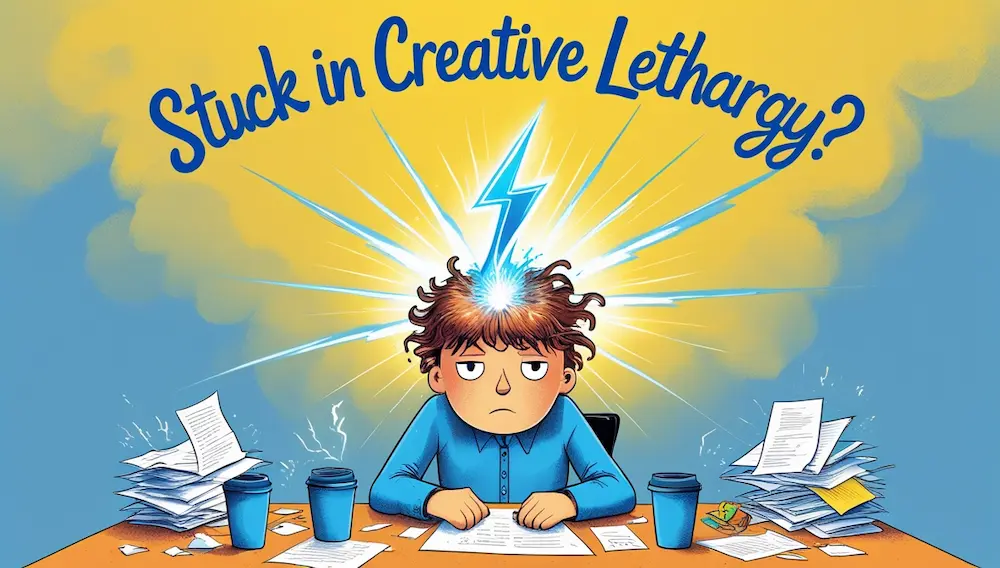
Creative lethargy can be surprisingly stressful—sometimes even more than a looming deadline.
One of my teachers used to remind us: “Yes, creative people experience mood swings.”
We’re human, after all. We can’t generate brilliant ideas 24/7 like a machine.
Some days, your mind is overflowing with inspiration. Other days, it feels like there’s nothing but a single pea rattling around in your head. (Shake your head. Can you hear that?).
These ups and downs can be exhausting, and they often make us doubt whether we’ll find the right ideas in time for our projects.
Let’s be honest: if you can’t find ideas, you can’t deliver your work on time. That’s a stressful feeling—and it’s completely normal. In fact, the more we stress about it, the more our creativity seems to freeze up!
If you want to work with peace of mind, unlock your best ideas quickly, and deliver your projects on time, this article is for you.
1. Regulate Your Mood and Energy
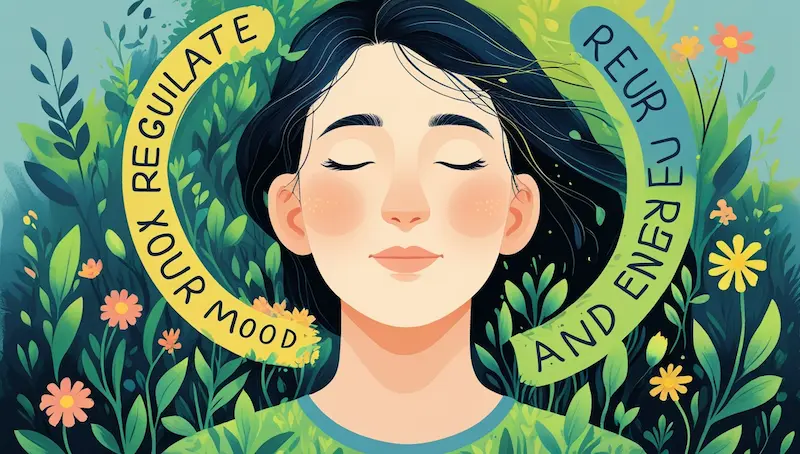
The brain is an “energivore.”
Our bodies don’t just consume energy when we move, but also when we think intensively. So yes, our brains get tired, lazy, and need rest sometimes. It’s normal to need time to refuel.
- Mood Tracker: You could use a simple journal (or a simple piece of paper) to track your mood and energy levels daily. Notice patterns—when are you most creative? When do you feel low? Is it at morning, night time? When, and where do you feel most inspired and productive?
When I was a student, I used to be highly productive at night. When the world was asleep. No distraction, no bad news on television, or anyone could possibly bother me. Time felt like frozen. - Energy Matching: Schedule your most demanding creative work during your high-energy periods. Use low-energy times for admin, rest, or light tasks. Is it at morning when you wake up before breakfast? Or after your first cup of coffee? Find your daily ritual.
- Micro-Breaks: When feeling lethargic or stuck, take a 5-minute walk, stretch, or do a breathing exercise. Sometimes, a short reset is all you need.
2. Capture and Organize Your Ideas

At my design school, we had so multiple creative classes each week, and every teacher would ask us to come up with pages of ideas and sketches. Some students complained about feeling dry, squeezing our brain like a sponge!
But our chief department teacher reminded us:
“Ideas sometimes come, sometimes don’t. That’s normal. But as a Designer, it is your role to overcome that challenge.”
That’s why he pushed us to keep filling pages—before even looking at the content, he even weighed the stacks of paper by hand! If it was too slim, he said nothing. He didn’t shame anyone. But when a student’s research book was thick, he would encourage the whole class showing it is possible.
At that early stage, it wasn’t about good or bad ideas yet; it was first of all, about quantity.
That way, we could feel unstoppable and raise our bar of creative expectation.
Remember, as a designer, you got to be more creative than average. And it is not something innate. We got to train that Idea generation skill.
It all starts with a brainstorming, you need to relax and be ok starting with a blank page.
Don’t be too judgemental on yourself. Keep sketching, doodle. It does not matter if it is ugly, as long you understand yourself. That sketchbook is for yourself, and your teacher to see and assess you.
TIP A: Do not eliminate ideas too early
Some ideas may seem bad (in isolation), but when you link them together with another, they can become genius!
Quality matters, but quantity matters too—especially at the beginning of any design project. So, don’t eliminate any ideas too early, you never know it can spark something new later!
TIP B: Note your ideas like a Journalist
Think of yourself as a journalist who brings his notebook with him all the time. Always be ready to jot down interesting info, discoveries, you never know great ideas can come up. Be ready to take down fresh ideas with a doodle.
As a designer, you’ll deal with thousands of ideas and inspirations. You can’t manage them all at once. Release that pressure—let your thoughts flow on paper with rough sketches and notes. It is not about making beautiful drawing yet. Draw ugly doodles to be more creative!
TIP A: You can use a Stabilo highlighter to circle your “best/promising ideas”. But till your project is not finish, never throw away any paper. You may regret it! Remember, an isolated idea may look uninteresting, but coupled with another, it can produce an amazing one!
TIP B: When your mind has thousands of ideas battling at the same time, do not sketch them one by one. Write them first with a few keywords only. No long paragraph. Make a list, and add the ugliest and fastest sketch you do besides. You will come back on it later. Doing so, you make sure you won’t forget to take down on paper any good ideas you have!
3. Create a “5-Minute Rule” Habit

When you feel lethargic, you may enter a phase of procrastination.
Don’t feel gulity about it. It is ok to rest and listen to your body. However, you want to hack your brain doing that:
- Start Small: If you don’t feel like working, promise yourself to do just 5 minutes of your chosen activity (sketching, brainstorming, etc.).
- Momentum Builder: Often, starting is the hardest part. If you feel motivated after 5 minutes, keep going. If not, it’s okay to stop—at least you tried!
4. Balance Output with Input

If you’re experiencing brain fatigue but still need to be productive, allocate simple tasks during these phases:
- like reading emails,
- organizing folders,
- or gathering pictures of inspiration on Pinterest.
These tasks will feel like a cruise, and you won’t feel guilty “doing nothing” while still making progress.
- Active Creation: Spend more time creating than consuming. Limit passive scrolling and set intentional time for inspiration (art books, museum visits, etc.).
- Rest and Recharge: Accept that downtime is necessary for creativity. You can schedule regular breaks, and don’t feel guilty for resting.
Some use Pomodoro to rhythm their work session. But I personally don’t like it for my creative sessions. I don’t like to let a timer interrupt me every 45 minutes. I like to let my creative flow wherever it wants, and keep going as long as it needs to. Some days, I can keep working of something for hours nonstop. Then I feel like recharging with a good feel of wow! I did such a great exploration.
5. Reflect and Adjust
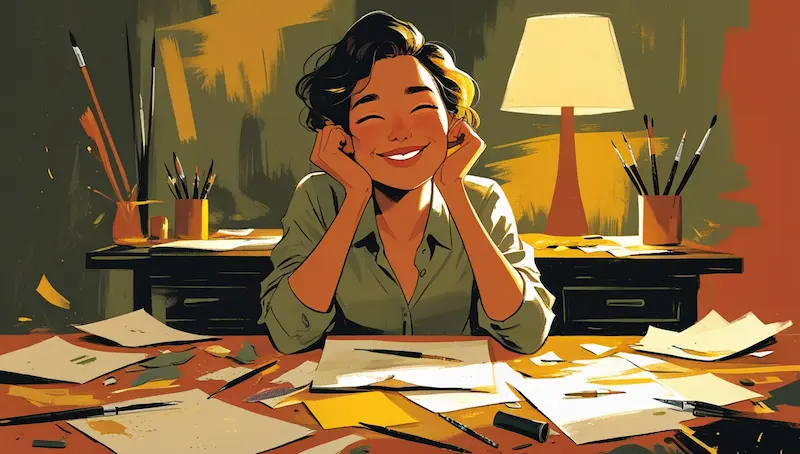
- Weekly Reflection: At the end of each week, reflect: What worked? What didn’t? When did you feel most “in flow”? Adjust your routine accordingly.
- Celebrate Progress: Acknowledge even small steps forward. Progress is progress!
BONUS: From Idea Generation to Client’s Project Delivery Day

NOTE: Plan at least 3 big project reviews with your client, where for each, you eliminate ideas and keep the most interesting ones like a “Battle Royale”. I shared here the 5 phases of a Design project presentation. Try to come up with:
- Don’t be shy. At the early stage of a project, all ideas matter.
Empty your mind onto paper so you won’t feel overwhelmed.
Use paper as your external hard disk—an external storage your brain can revisit anytime. - Idea Dump: Whenever inspiration strikes, jot it down in a notebook, app, or on sticky notes.
Don’t judge or filter—just capture. - Project List: Move your top ideas to a dedicated project list.
This helps you focus on a few things at a time and reduces mental clutter. You highlight them, cut them with a pair of scissors, or add them in a specific paper folder. - Project Review: Select the most promising ideas and let go of the rest. Now is time to dig dipper ideas on each by creating variations.
- Project A- A proposal that respect closely your client’s brief (the Safe project)
- Project B- A proposal that you client might like, but you added in something extra. (The Ambitious project)
- Project C- A proposal that is borderline, risky. (The Rebel project)
You would be surprised that some clients would receive your input highly positively.
However, always make sure you gave your best on the safe project!!
Quick Reference: Designer’s Creative Balance Checklist
- Did I capture my ideas today?
- Did I review and prioritize my ideas this week?
- Am I matching my tasks to my energy levels?
- Did I take breaks when needed?
- Did I create (not just consume) today?
- Did I reflect on my mood and progress?
Remember:
Creativity is a cycle of highs and lows.
By building habits to capture ideas, regulate your mood, and balance your energy, you’ll find more joy and productivity in your creative work—and in life.
Stay creative,
Chou-Tac
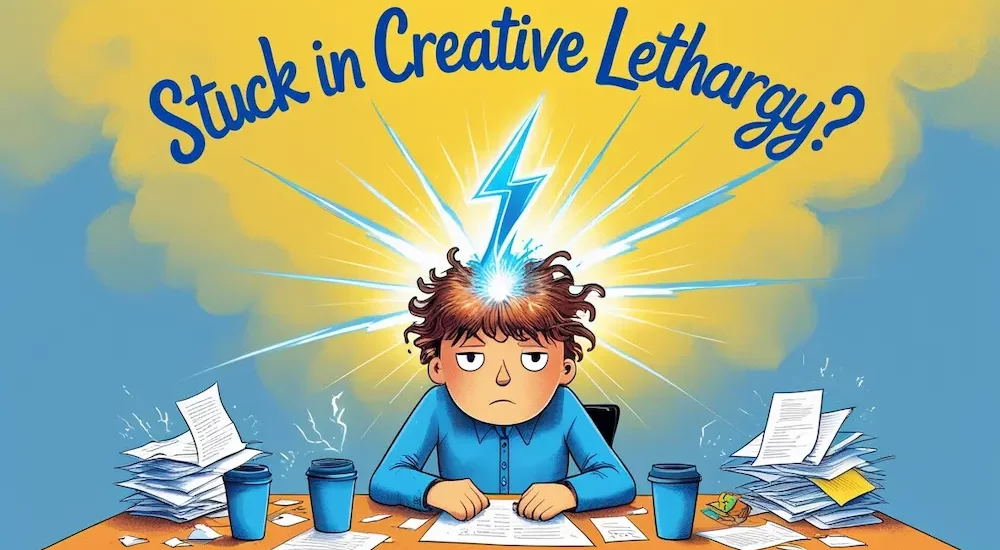
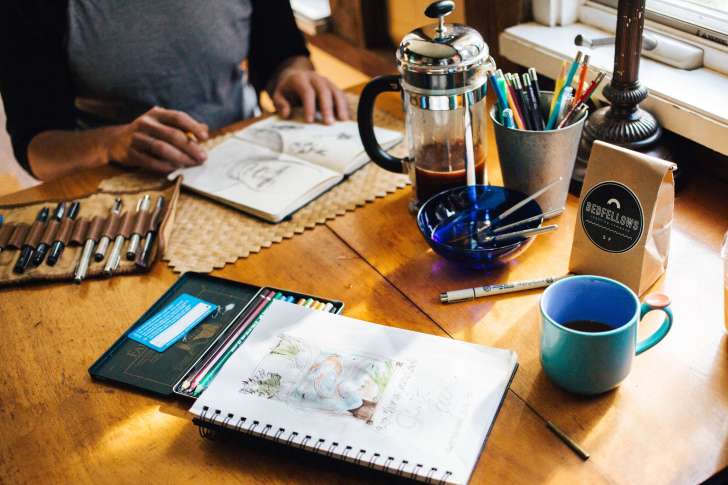
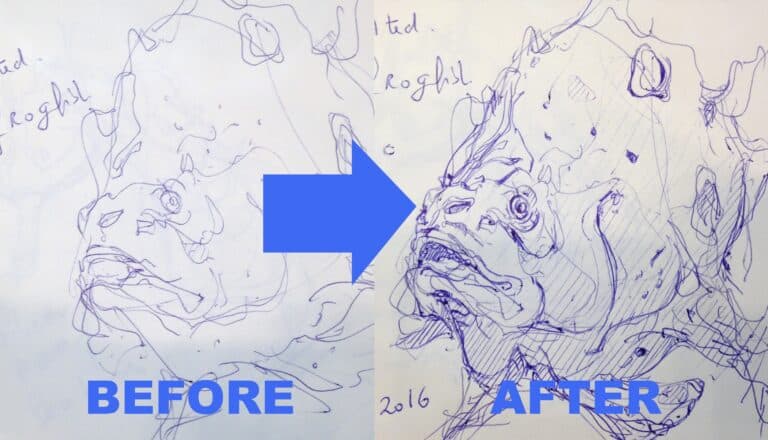
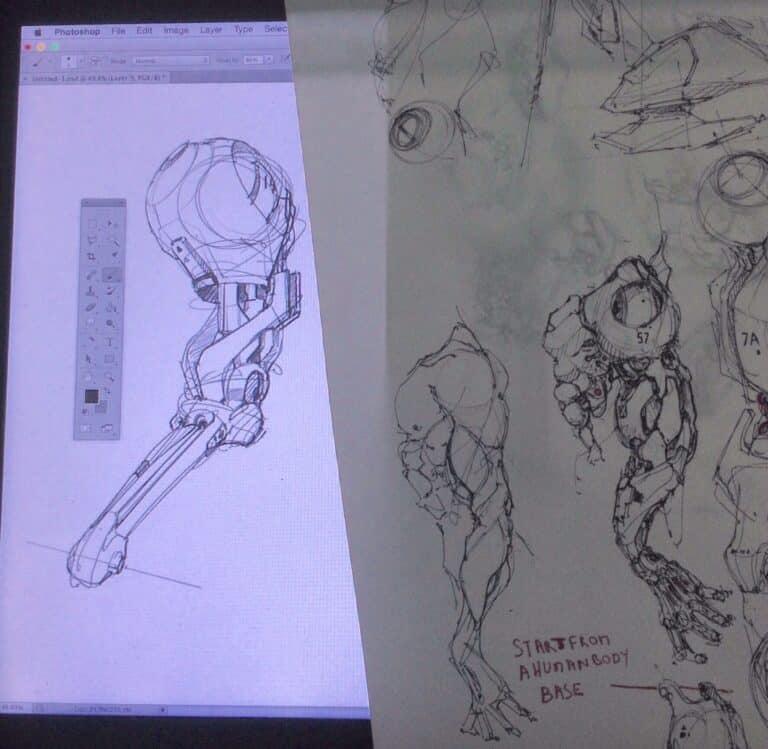
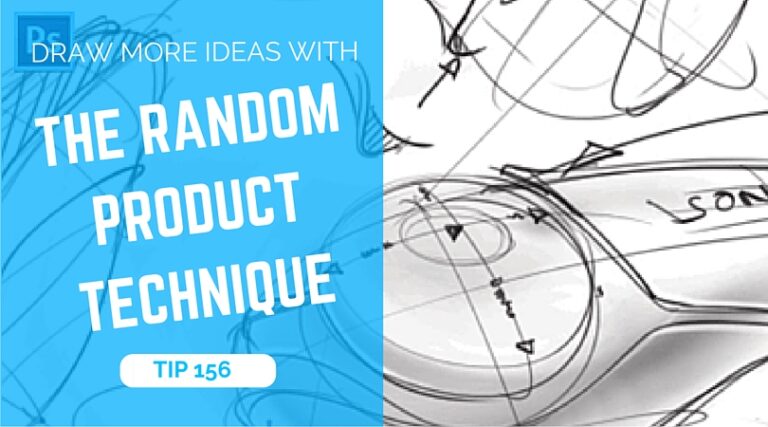
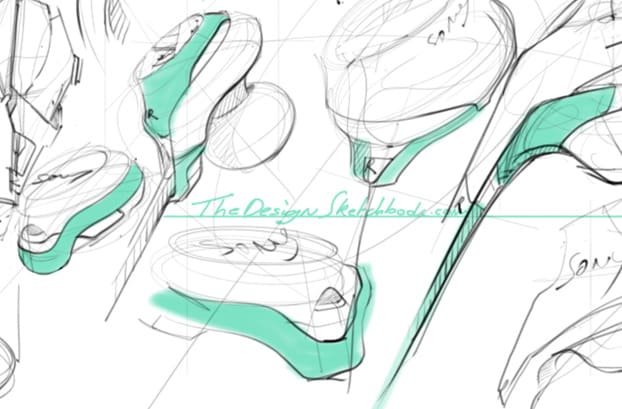
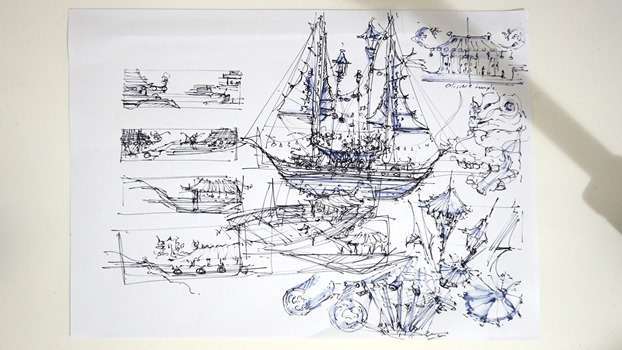
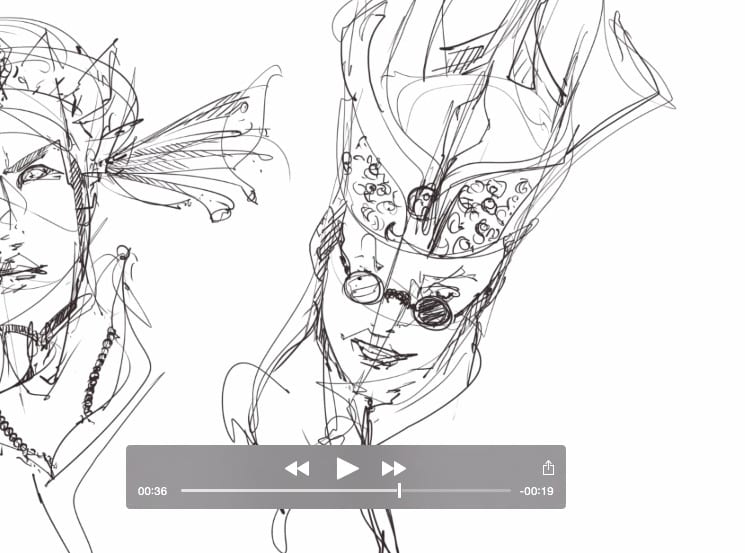


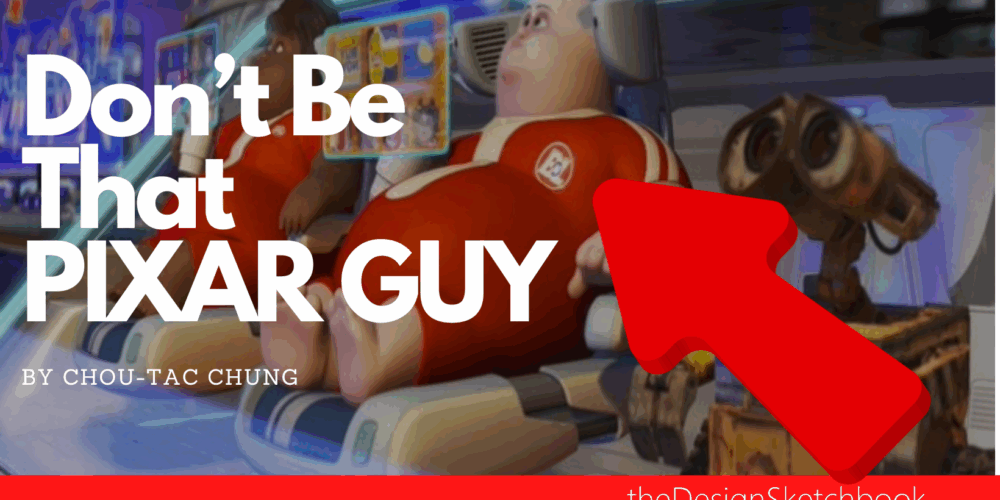
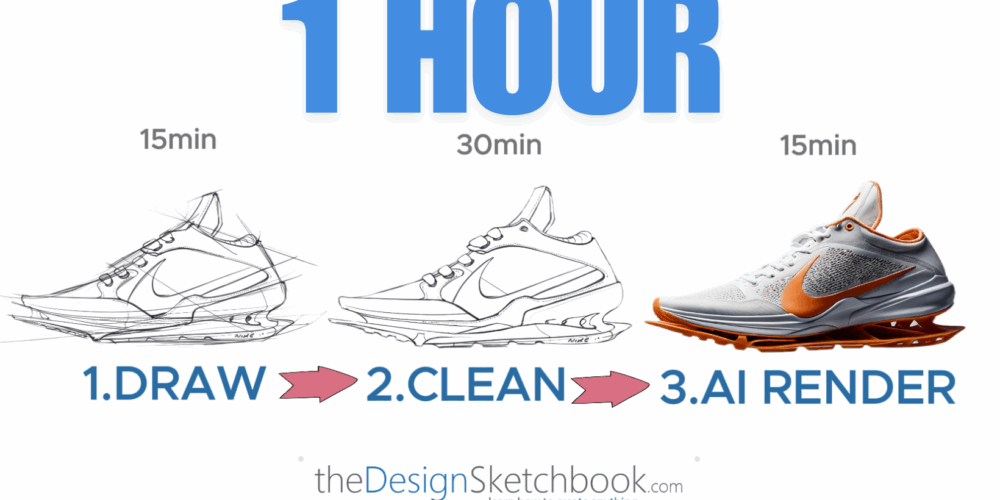
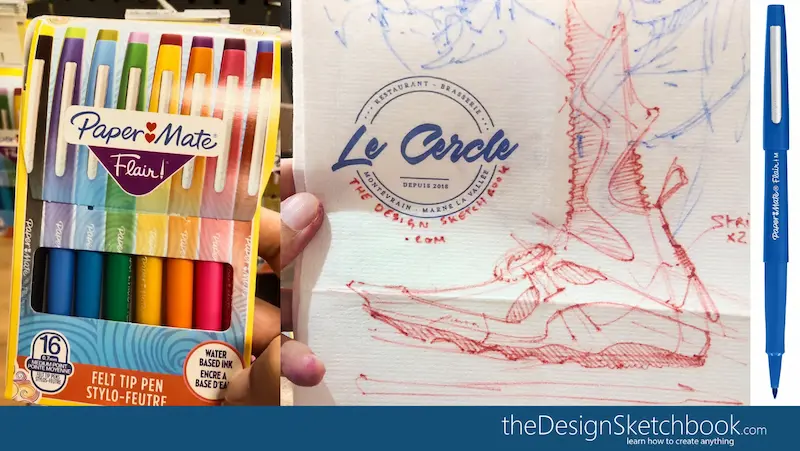
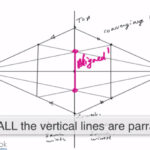
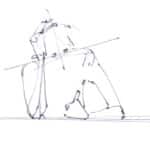


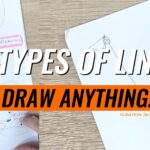
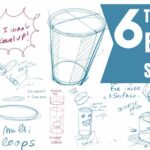

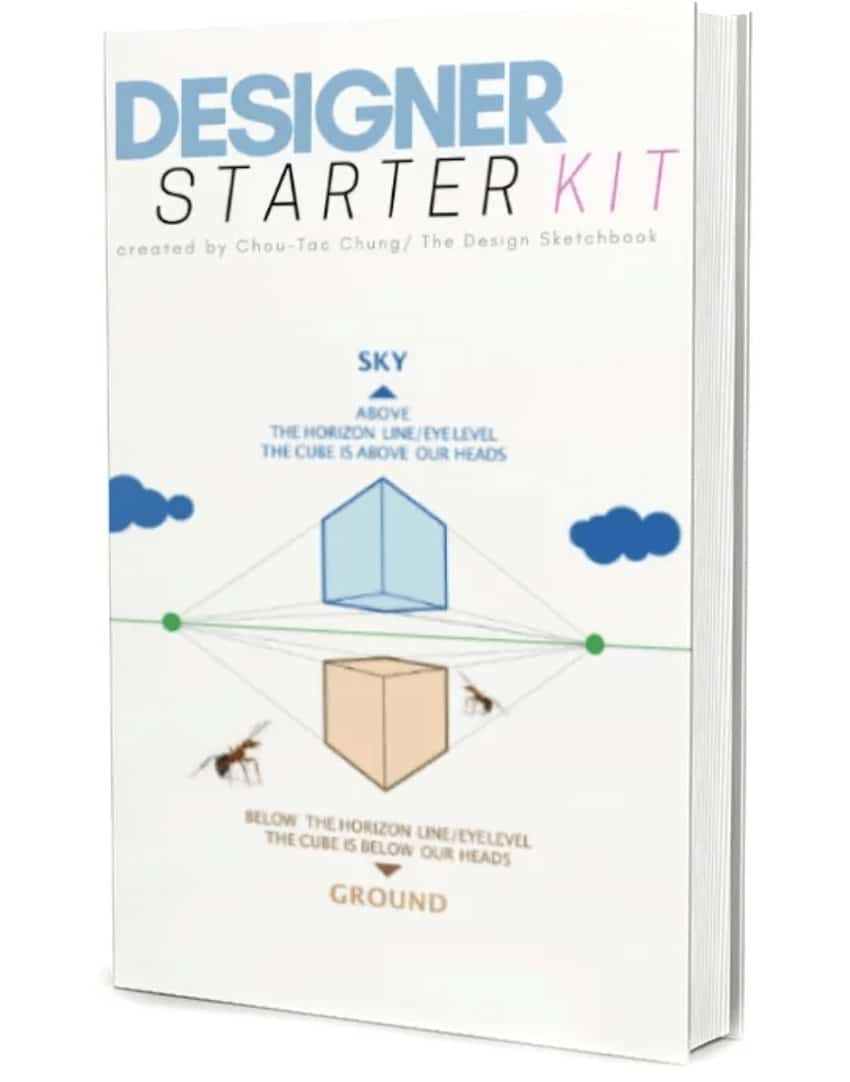
Add comment